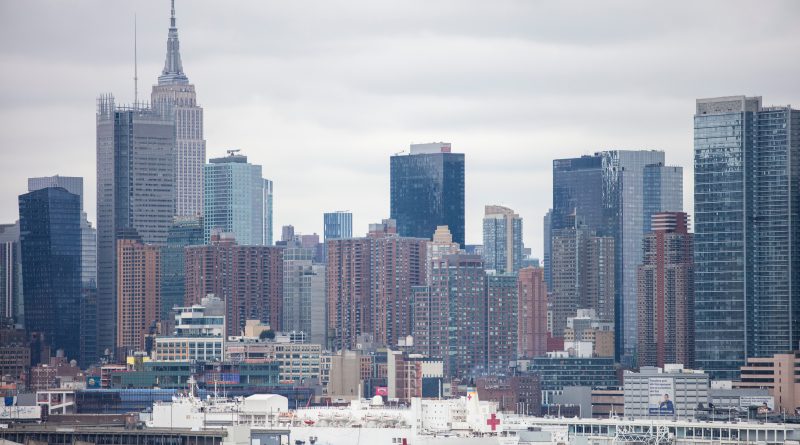“Wake-Up Call”: How the Coronavirus Can Impact Climate Change
Axel Sontgerath
Staff Writer
As the coronavirus continues to morph into a global pandemic few saw coming, civilians watch as hazardous biocontamination, a perilous healthcare crisis, and a looming economic crash unfold across the globe. Amongst the chaos of this international emergency, an unknown and unseen actor emerges: the environment.
The environmental effects of the COVID-19 pandemic are visible across the world. The Guardian reports that in Nara, Japan, sika deer wander through city streets and subway stations, with raccoons spotted on the beach in an emptied San Felipe, Panama and wild turkeys making a reappearance in Oakland, California. It appears that ecosystems can indeed rebound with speed once human intervention subsides, according to Bloomberg. However, the question of how to sustain these gains still looms.
The story of lowered carbon emissions began right where the virus itself originated: The People’s Republic of China. According to Scientific American, China has seen a 25% decrease in carbon emissions since the viral outbreak. This is largely due to the sudden and almost immediate halt in travel and manufacturing activity around the nation. Emission outputs similarly declined worldwide as the spread of COVID-19 curtailed the global demand for oil and air travel. According to the BBC, traffic levels in New York City were estimated to be down 35% compared to a year ago. Emissions of carbon monoxide, mainly due to cars and trucks, fell by roughly 50%.
The onset of the coronavirus pandemic is forcing scientists to examine the relationship between everyday human behaviors, their response to large-scale disasters, and carbon footprints. Climate change policy expert Christopher Jones told Scientific American that “with the economy and carbon footprints, they’re so interrelated that you really quickly start to have all these complex interactions.” Simply put, a typical American under a government-issued stay-at-home order consumes less carbon than ever.
Although this reality highlights how much of our carbon footprint derives from daily activity, there is still a catch. Staying at home could mean that people consume much more energy inside the home, Scientific American reports, from online shopping to watching TV to using household appliances with more frequency. The precise amount depends on weather conditions, geography, and different family lifestyle.
“If you come home to a cold house and you have to heat it, that’s going to more than offset the savings from not driving your vehicle to work, on average,” Jones says. “If you come home to a beautiful day as we have in California, and there was somebody home anyway, really we’re not using much more energy than if I were at work.”
Another catch is the potential harm that non-environmentally conscious government interventions will do to the environment. According to Wired, the most likely outcome of this pandemic is not a climate change solution. In order to make for the economic losses, countries like China and the U.S will instead roar back with stimulus packages that will bolster industries who harm the environment the most.
The BBC reports that governments around the world now have the opportune moment to latch on to green energy. Professor Corinne Le Quéré from the University of East Anglia stated, “[governments] should focus on those things that are ready to go that would lower emissions, like renovating buildings, putting in heat pumps and electric chargers. These are not complicated and can be done straight away, they are just waiting for financial incentives.”
Other reports are much less optimistic. Joanna Lewis, an expert on China’s energy sector at Georgetown University, told The Washington Post, “The reductions are substantial, but they are most certainly only temporary, and there will likely be a rebound effect. Once people go back to work and factories restart, they may try to make up for lost time. This could result in a surge in emissions.”
Although the impact of the coronavirus pandemic is not something to be celebrated in any capacity, there are tangible goals for governments to achieve in the wake of this tragedy. Jacqueline Klopp, co-director of the Center for Sustainable Urban Development at Columbia University stated to Scientific American, “For resiliency in crises, public health and greenhouse gas reductions, it is critical to build cities that cater for zero emissions, healthy modes of transport. They can do that by investing in safe, segregated bike lanes and excellent sidewalks, as well as amenities not too far away from where people live, so they have the option of using these modes.”
Ultimately, the COVID-19 pandemic will not offer up a solution to climate change. Even though it may have given the Earth a much-needed breather, government interventionist policies could end up doing more harm in the long run. No matter what the consequences, one thing is clear: governments must be incentivized to adopt environmentally sustainable practices. COVID-10 may be a wake-up call, but if nothing is done in the near future, it will be far from the only one.



